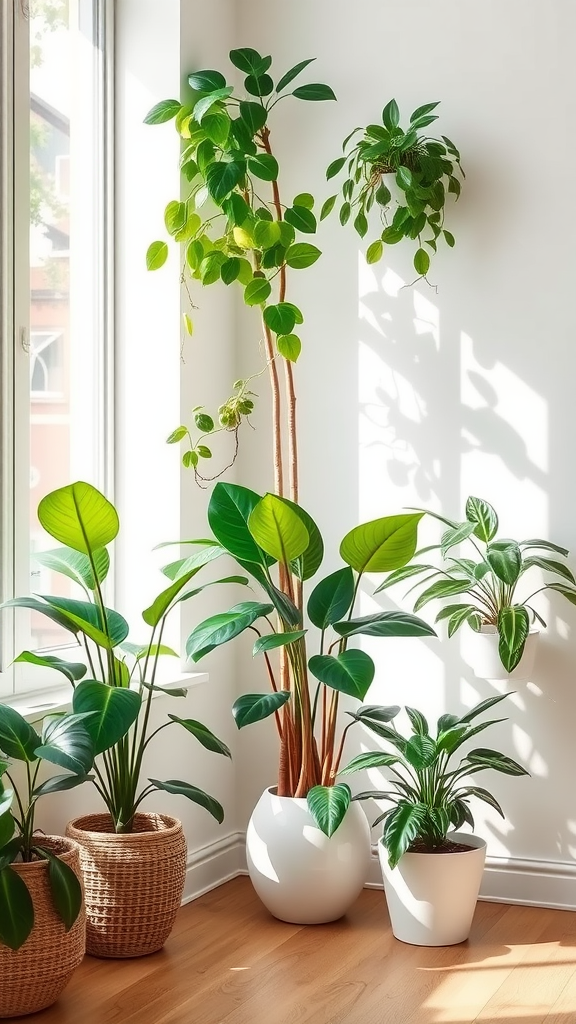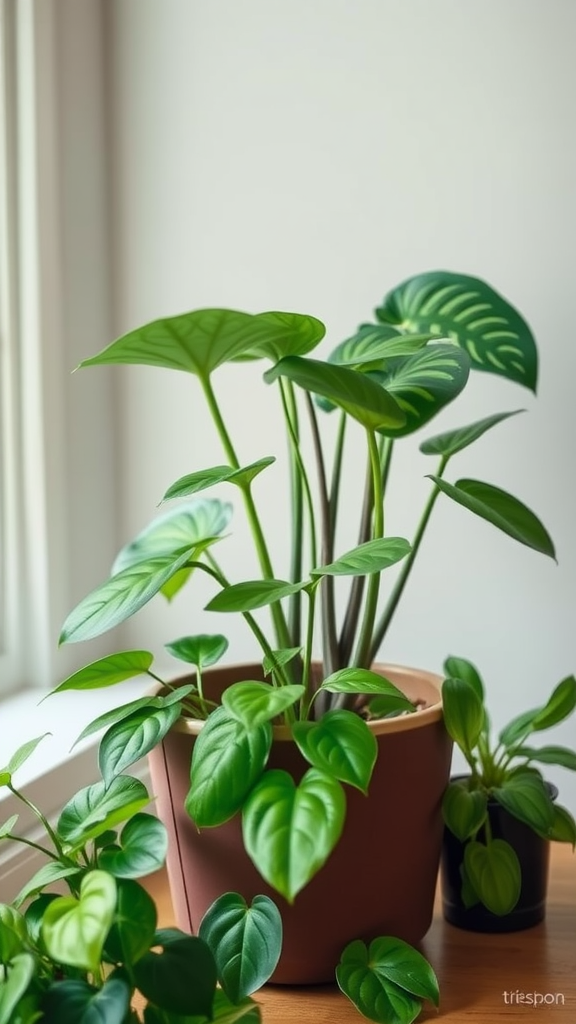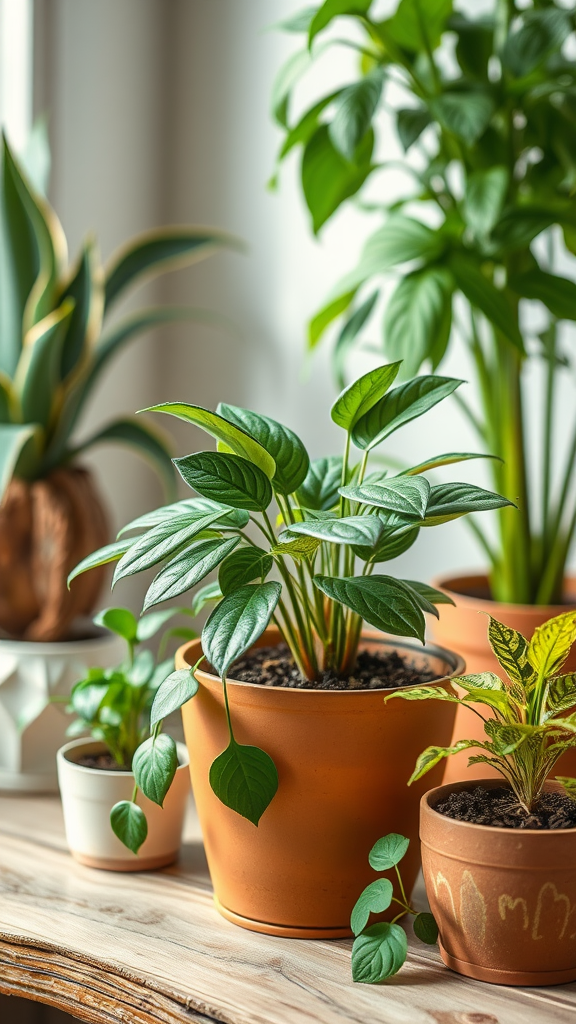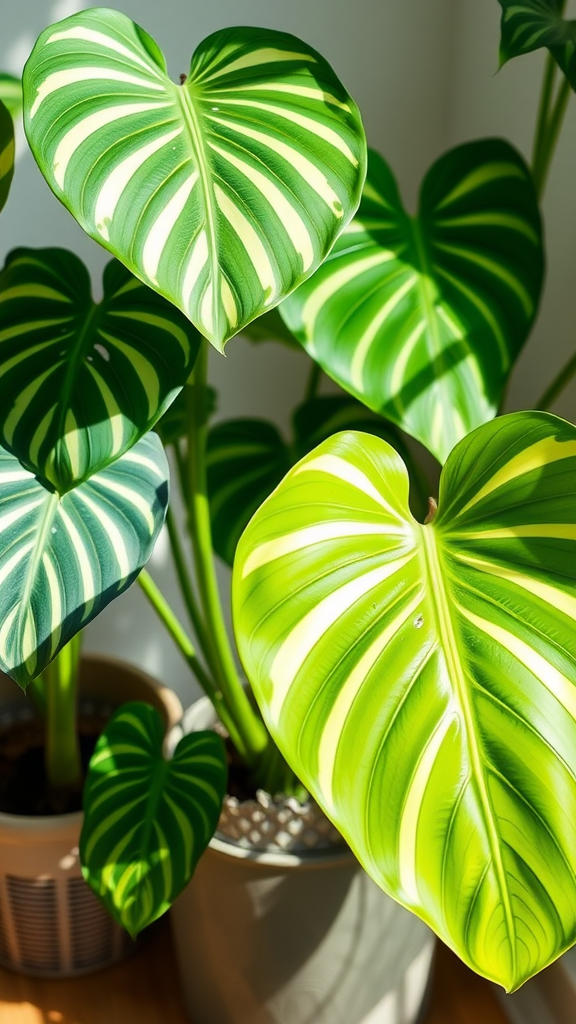The Benefits of Incorporating 10 Air-Purifying Plants for a Healthier Home
Your home should be a sanctuary, a place where you feel safe and healthy. One powerful way to elevate your indoor space is by incorporating air-purifying plants. These green companions not only enhance your home’s aesthetics but significantly improve the air quality around you. Here, we will explore ten incredible air-purifying plants you can easily add to your living space for a healthier home.
1. Spider Plant
The spider plant is a popular choice for homes due to its hardiness and ability to thrive in various conditions. This plant is known to remove pollutants such as formaldehyde and xylene, making it a wonderful addition to your home. Plus, its long arching leaves are visually appealing!
2. Snake Plant
The snake plant, or mother-in-law’s tongue, is another easy-to-care-for plant. It converts carbon dioxide into oxygen at night, making it an excellent choice for your bedroom. This plant can tolerate low light and infrequent watering, perfect for busy lifestyles.
3. Peace Lily
If you want to add a touch of elegance to your space, consider the peace lily. Apart from its stunning white blooms, this plant efficiently removes harmful toxins like ammonia, benzene, and formaldehyde. Keep it in indirect sunlight for the best growth.
4. Boston Fern
The Boston fern is a lush and beautiful plant that adds vibrancy to your home. It excels in removing formaldehyde from the air and prefers a humid environment. Mist the leaves and place it in a cool spot for optimal growth.
5. Bamboo Palm
Palm lovers will appreciate the bamboo palm for its air-purifying qualities and aesthetic appeal. This plant can filter out formaldehyde and benzene, providing you with cleaner air. It thrives in indirect light and should be watered frequently to maintain its humidity.
6. Aloe Vera
Aloe vera is not only a well-known succulent for its healing properties but also an excellent air purifier. This plant helps eliminate formaldehyde and benzene while being easy to care for. The gel inside its leaves can be used for skin care as well!
7. Rubber Plant
The rubber plant is an attractive option that can grow quite tall, making it a striking indoor feature. It’s known for its ability to remove toxins and add a touch of greenery to your home. With its large, glossy leaves, it is sure to enhance any room.
8. Dracaena
The dracaena family includes many appealing varieties, all known for their air-purifying capabilities. These plants can remove toxins like xylene and formaldehyde and are relatively low maintenance. They prefer bright, indirect light and should be watered when the top inch of soil is dry.
9. ZZ Plant
The ZZ plant is perfect for those who might not have a green thumb. This hardy plant can survive in low light and requires very little water. It’s known to filter out xylene, toluene, and benzene, making it an excellent choice for clean air.
10. Pothos
Pothos plants are trendy and come in various colors and sizes. They are effective at eliminating indoor pollutants like formaldehyde and carbon monoxide. This vine can thrive in low-light conditions and is easy to propagate, making it a favorite among plant enthusiasts.
Benefits of Air-Purifying Plants
- Improved Air Quality: These plants can filter harmful airborne toxins and provide cleaner air to breathe.
- Aesthetic Appeal: Greenery can brighten up rooms and create a more inviting atmosphere.
- Stress Reduction: Studies show that being around plants can reduce stress levels and improve overall well-being.
- Increased Humidity: Many air-purifying plants release moisture into the air, which can help alleviate dryness.
- Oxygen Production: Plants produce oxygen, helping to rejuvenate the space with fresh air.
These ten air-purifying plants into your home not only enhances your indoor environment but also promotes a healthier lifestyle. Whether you choose a snake plant for your bedroom or a pothos for your living room, you’ll be investing in both beauty and well-being. Take a step towards a greener and healthier home today!
Tips for Caring for Your Indoor Plants to Maximize Air Quality
Taking care of your indoor plants is crucial for enhancing air quality in your home. By following these practical tips, you can help your plants thrive and, in turn, create a healthier living environment. Here’s how to maximize the benefits of air-purifying plants.
Choose the Right Plants
The journey begins with selecting the right air-purifying plants. Here are some excellent choices:
- Spider Plant: Great for beginners; it thrives in various conditions.
- Snake Plant: Low-maintenance and can tolerate neglect.
- Pothos: Grows quickly and effectively removes toxins.
- Peace Lily: Known for its beautiful white flowers and air-purifying qualities.
- Aloe Vera: Offers health benefits along with purifying capabilities.
Provide Adequate Light
Light is crucial for your plants’ health and their ability to purify air effectively. Observe the specific light requirements for each plant. Some prefer bright indirect light, while others thrive in low-light conditions. Make sure to position your plants according to their needs for optimal performance.
Water Correctly
Overwatering or underwatering can stress your plants and diminish their air-purifying power. Follow these simple rules:
- Check the soil moisture with your finger. If it’s dry an inch below the surface, it’s time to water.
- Always use pots with drainage holes to prevent root rot.
- During winter months, most plants need less water.
Maintain Humidity
Indoor air can be quite dry, especially in winter. Many plants benefit from higher humidity levels. Here’s how you can create the right environment:
- Group plants together to create a microclimate.
- Use a humidifier in your room, especially during dry months.
- Place a tray of water with pebbles under your plants. This adds moisture without making roots soggy.
Fertilize Seasonally
Just like any good living organism, indoor plants need nutrients. Fertilizing them boosts their growth and air-purifying abilities. Follow these tips for effective fertilization:
- Use a balanced liquid fertilizer every 4-6 weeks during the growing season (spring and summer).
- Avoid fertilizing in fall and winter when growth slows down.
- Make sure to follow the instructions on the fertilizer packaging to avoid any damage.
Dust Leaves Regularly
Dust can accumulate on leaves, making it difficult for plants to breathe. Regular cleaning helps enhance their ability to purify air. To clean your plant leaves:
- Use a damp cloth to wipe the leaves gently.
- For larger leaves, consider using a soft sponge.
- Avoid using harsh chemicals—water alone is often enough.
Repot When Necessary
As your plants grow, they might outgrow their containers. Repotting allows them to continue thriving. Look for signs that it’s time to repot:
- Roots are coming out of the drainage holes.
- Plants seem to be holding water after watering.
- Growth has stalled despite proper care.
Monitor for Pests
Indoor plants can attract pests if not monitored. Regularly check your plants for signs of insects or disease. Here’s what to do:
- Inspect leaves regularly for tiny bugs or discolored patches.
- If found, isolate the affected plant immediately.
- Treat pests with natural insecticidal soap or neem oil.
Engage with Your Plants
Take the time to enjoy your indoor garden. Interact with your plants by talking to them or simply spending time in their presence. Your attention can translate into better care, leading to healthier plants that do wonders for your home’s air quality.
By taking these steps, you can create a thriving indoor garden that not only beautifies your space but also improves your overall air quality. Remember, happy plants equal a healthier home!
Conclusion
Air-purifying plants into your home comes with a plethora of benefits. Not only do these green allies enhance the beauty of your space, but they also work tirelessly to improve air quality. By removing toxins and releasing fresh oxygen, these plants create a healthier environment for you and your loved ones. Imagine breathing in cleaner air while surrounded by nature’s beauty—it’s a win-win!
To get the most out of your indoor plants, proper care is essential. Regularly dusting the leaves helps them absorb more light, while ensuring they’re in well-draining pots prevents overwatering. Remember to check for the specific light and water needs of each plant, as some thrive in bright light while others prefer shade. Engaging with your plants through simple routines not only boosts their health but can also reduce your stress levels, creating a more serene home atmosphere.
Adopting a few of these air-purifying plants and taking the time to care for them can transform your living space into a sanctuary of clean air and tranquility. As you select plants that resonate with your lifestyle and aesthetic, you’re not just beautifying your space—you’re investing in your health. Start today by introducing these green companions, and enjoy the numerous advantages they bring to your home and well-being. Your indoor environment will flourish, and your lungs will thank you!





